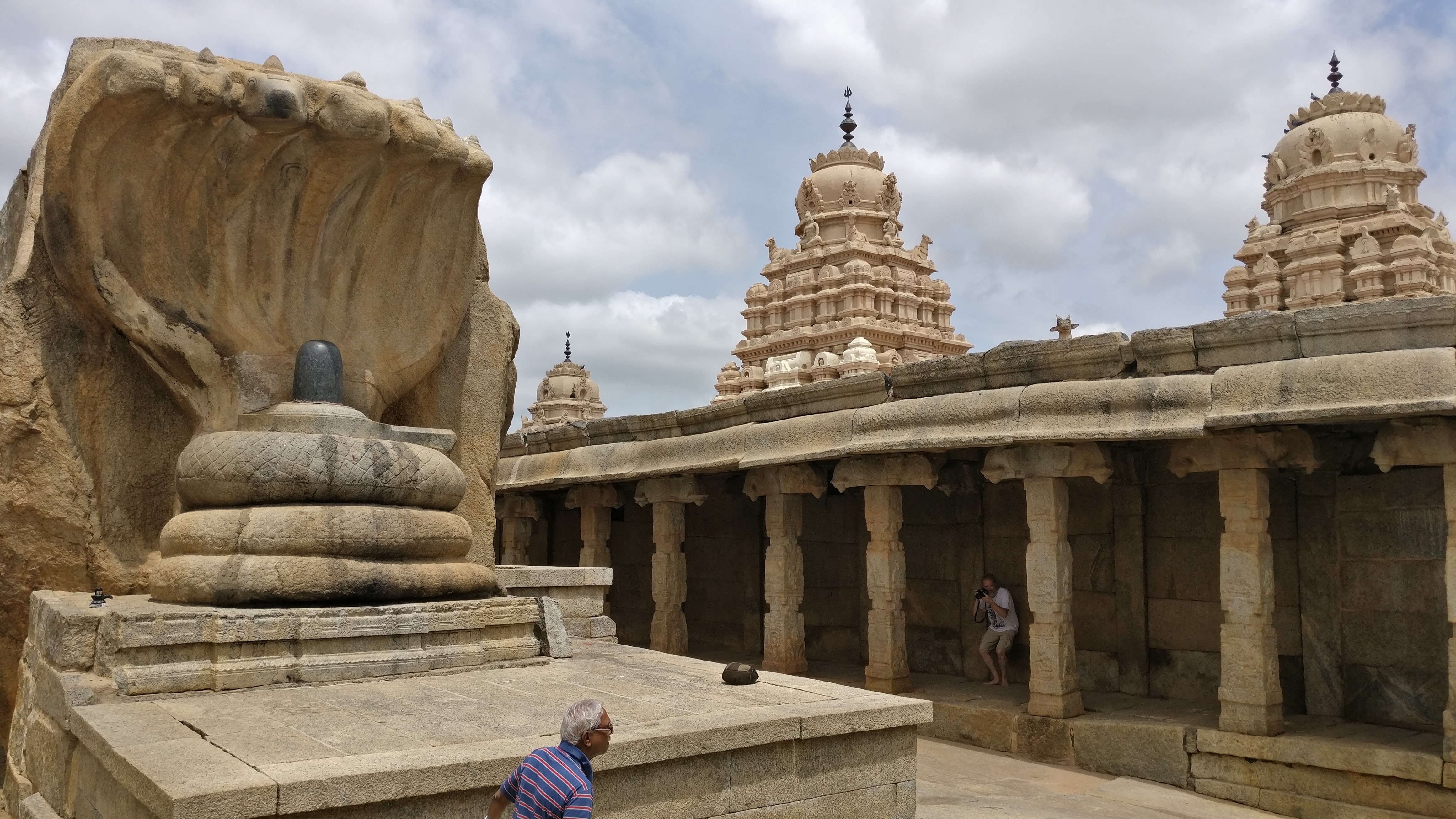Built during the Vijayanagara era, this temple is dedicated to Lord Veerabhadra—a fierce form of Shiva. The temple's most mysterious feature is the hanging pillar, said to be suspended without support. Legends claim the temple was constructed in grief by Shiva’s followers after Sati's sacrifice in Daksha Yagna. Local lore says the temple still echoes with the energy of cosmic rage and divine protection.
🕉️ HISTORICAL
BACKGROUND
1. The Vijayanagara Period (14th–17th Century)
The temple was built around 1530 AD during the reign of Achyuta Deva
Raya,
the successor of the famed emperor Krishnadevaraya of the Vijayanagara
Empire.
The empire was known for its cultural renaissance, especially in art,
literature, and architecture. Temples built during this era were
elaborate
and vibrant, often featuring colossal sculptures, mandapas (halls),
gopurams
(towers), and vivid murals.
2. Builders of the Temple
The temple was constructed by Viranna and Virupanna, two brothers who
served
as governors (chieftains) under Achyuta Deva Raya. They were believed to
be
devout followers of Lord Shiva and undertook the construction of this
temple
without prior royal permission.
Legend states that Virupanna, who was the royal treasurer, diverted
state
funds for temple construction. When the king found out, he ordered that
Virupanna be blinded. Instead of facing the punishment, Virupanna is
said to
have blinded himself by striking his eyes against the temple wall,
leaving
two bloodstains on a wall inside the temple — which are still visible
today.
🔱 MYTHOLOGICAL
SIGNIFICANCE
1. Legend of Veerabhadra
- The temple is dedicated to Veerabhadra, a fierce incarnation of Lord
Shiva. According to Shaivite mythology, Veerabhadra was born from
Shiva’s wrath.
- The story goes that Sati, Shiva’s consort, immolated herself after her
father, Daksha, insulted Shiva by not inviting him to a yagna
(sacrificial ritual). In his rage, Shiva plucked a lock of his matted
hair and dashed it to the ground. From it emerged the terrifying warrior
Veerabhadra, who went on to destroy Daksha’s yagna and behead him.
- This temple is believed to be one of the locations where Veerabhadra
manifested. The sanctum houses a stunning idol of Veerabhadra with a
fearsome aspect, adorned with weapons and surrounded by fierce
attendants.
2. Ramayana Connection
One of the most fascinating aspects of the temple is a large footprint
etched on the floor, which is said to belong to Sita, the wife of Lord
Rama. It is believed that during their exile, Rama and Sita passed
through this region, and the imprint of Sita's foot was left on the
stone.
Water constantly trickles near this footprint, and its source remains
unknown even to this day.
🏛️ ARCHITECTURAL
FEATURES
1. Style and Layout
The temple is a prime example of Vijayanagara style architecture,
combining Dravidian temple features with local craftsmanship.
It sits atop a tortoise-shaped hillock, giving it the name Kurma Saila
(Kurma = tortoise, Saila = hill).
2. Major Architectural Marvels
Hanging Pillar: One of the temple’s 70 massive pillars
is said to hang
suspended without touching the ground. A cloth or paper can be passed
underneath it. Engineers and archaeologists have studied it, suggesting
it might have been part of an experiment in weight distribution or
seismic design.
Murals and Frescoes: The temple walls and ceilings are
covered in
Vijayanagara-style frescoes that are vibrant and detailed. These depict
various episodes from the Mahabharata, Ramayana, and Shaivite mythology.
The ceiling above the dance hall contains a particularly large painting
of a 14-armed Shiva in the cosmic dance (Nataraja) pose.
Monolithic Nandi: About 200 meters from the main
temple
is a giant Nandi
(bull) sculpture — 4.5 meters high and 8.2 meters long — carved from a
single granite boulder, making it one of the largest of its kind in
India.
Kalyana Mandapa (Marriage Hall): This unfinished hall,
richly decorated
with sculpted columns showing celestial beings, is believed to have been
built for the divine wedding of Shiva and Parvati. The construction was
stopped abruptly — possibly due to the royal order against Virupanna —
leaving a sense of incompleteness.
🧭 SYMBOLISM AND
SPIRITUAL MESSAGE
- The temple, dedicated to Veerabhadra, symbolizes righteous fury and
the
divine order of justice. Veerabhadra’s story is not just one of
destruction but one of cosmic balance. The universe must restore order
even at the cost of devastation.
- The presence of sculptures, murals, and carvings from different layers
of Hindu mythology conveys the holistic nature of Sanatana Dharma, where
gods, goddesses, sages, demons, and humans all interact in the cosmic
story.
🌐 LEGACY AND CULTURAL
IMPACT
- The temple is now under the Archaeological Survey of India (ASI) and
is
a protected monument.
- It continues to draw devotees, art historians, scholars, and tourists
alike.
- It has inspired filmmakers, artists, and even engineers due to its
blend
of science and spirituality, especially the hanging pillar and the
mysterious water source near Sita’s footprint.
- It is sometimes considered a gateway to exploring Vijayanagara
architecture, outside of the more famous Hampi region.
